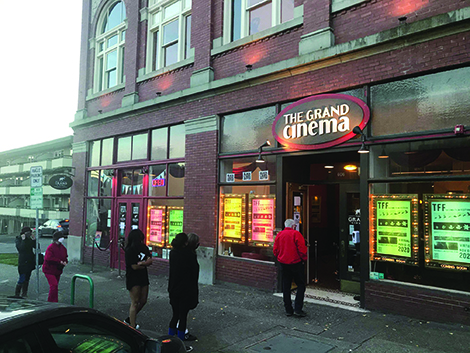Make emotional health a wellness priority
According to Mental Health America, a non-profit organization that promotes positive mental health, 31 percent of adults will experience an anxiety disorder in their lifetime, over 17 million adults have depression, and 7 percent of the adult population has major depression—all pointing to a need to put a bigger emphasis on emotional wellness, including what it is and how to improve it.
“Emotional health confronts your internal states of being. Emotions being love, anger, joy, and sadness. Emotions can be broken down into secondary and tertiary states,†said Katie Sandler, a personal-development and career coach.
Citing research from Harvard University, Mayo Clinic and Mental Health America, Sandler noted that stress, anxiety, and low self-worth are all emotional aspects of health which require tending to. Emotional health shows up in positive attitudes, high self-esteem and self-worth, and a healthy body image.
Some ways we can tend to and bolster our emotional wellness, Sandler said, include:
- Learn to identify emotions. Being able to identify emotions happens to be extremely challenging for even the most successful. It is not something we were truly taught to identify and then articulate. Start by simply becoming aware of your own emotional states and patterns. Once you become aware of them you can learn to successfully work through them in a healthy way, and ensure they don’t become overwhelming.
- Master coping skills. Coping is a tool for tending to our emotional health and building resilience, Sandler explained. Coping comes in many different shapes and sizes – it’s important for people to build a tool box of effective personal coping mechanisms. This also requires a period of trial and error. Coping can be done through things like meditation, spending time in nature, phoning a friend, doing breathing exercises, or journaling. Once you find one that works, add it to the ethereal tool box and remember to pull it out in times of need.
- Get to know you. Work on understanding yourself (aka loving yourself). The more you lean into yourself and show a desire to be curious and compassionate, the greater the likelihood of you shifting into emotional health. We spend a lot of time getting to know others, but very little time getting to know ourselves, and we need to change that.
- Practice mindfulness. According to Harvard University, mindfulness is paying attention to the present moment with openness, curiosity, and acceptance. The benefits of practicing mindfulness include decreasing depression, improving emotional reactivity, improves resiliency, and improving healthy coping skills. One of the most effective ways to improve mindfulness is to practice mindfulness meditation.
- Get physically active. Not only is getting enough physical exercise each week important to overall health, it’s beneficial for emotional wellness, too. The Mayo Clinic reports that exercise can help to improve depression and anxiety symptoms, as well as improve mood and help you feel better overall. Additionally, exercise helps people feel more confident and releases feel-good endorphins. Aim for getting at least 30 minutes of exercise per day on three to five days per week to get the most benefits.
“Every day you should spend time on emotional wellness,†said Sandler. “When you do that, it will pay off in all areas of your life. Make yourself a priority, stick with it, and see the beauty of the results.â€
THE EFFECT OF PANDEMIC-RELATED STRESS
On March 11, 2020, the World Health Organization declared COVID-19 a global pandemic. Millions of people sheltered at home for what they hoped would be a few weeks of sacrifice that would stop the spread of the coronavirus. One year later, more than 500,000 U.S. residents had died from the coronavirus, while the nation also grappled with racial injustice, a national election cycle and civil unrest.
In an October 2020 report, “Stress in America 2020: A National Mental Health Crisis,†the American Psychological Association (APA) warned about the impact of these stressful events on long-term physical and mental health. That was more apparent when a more recent survey of U.S. adults, conducted in February 2021 by The Harris Poll, revealed that physical health may be declining due to an inability to cope in healthy ways with the stresses of the pandemic.
Many adults surveyed by Harris reported they have gained or lost an undesired amount of weight, are drinking more alcohol to cope with stress, and aren’t getting their desired amount of sleep. This is particularly true of parents, essential workers, and people of color. According to APA, these reported health impacts signal many adults may be having trouble managing stressors, including grief and trauma, and are likely to lead to significant, long-term individual and societal consequences, including chronic illness and additional strain on the nation’s healthcare system, .
Significant weight gain poses long-term health risks. According to the National Institutes of Health, people who gain more than 11 pounds are at higher risk of developing Type II diabetes and coronary heart disease, and people who gain more than 24 pounds are at higher risk of stroke. And according to the national Centers for Disease Control and Prevention, people who are overweight are more likely to develop serious illness from the coronavirus.
Overall, physical health has taken a back seat. Forty-seven percent of Americans said they delayed or canceled healthcare services since the pandemic started. Additionally, 53 percent said they have been less physically active than they wanted to be during the pandemic.
American Psychological Association is a scientific and professional organization representing 122,000 researchers, clinicians and others in the field of psychology.


